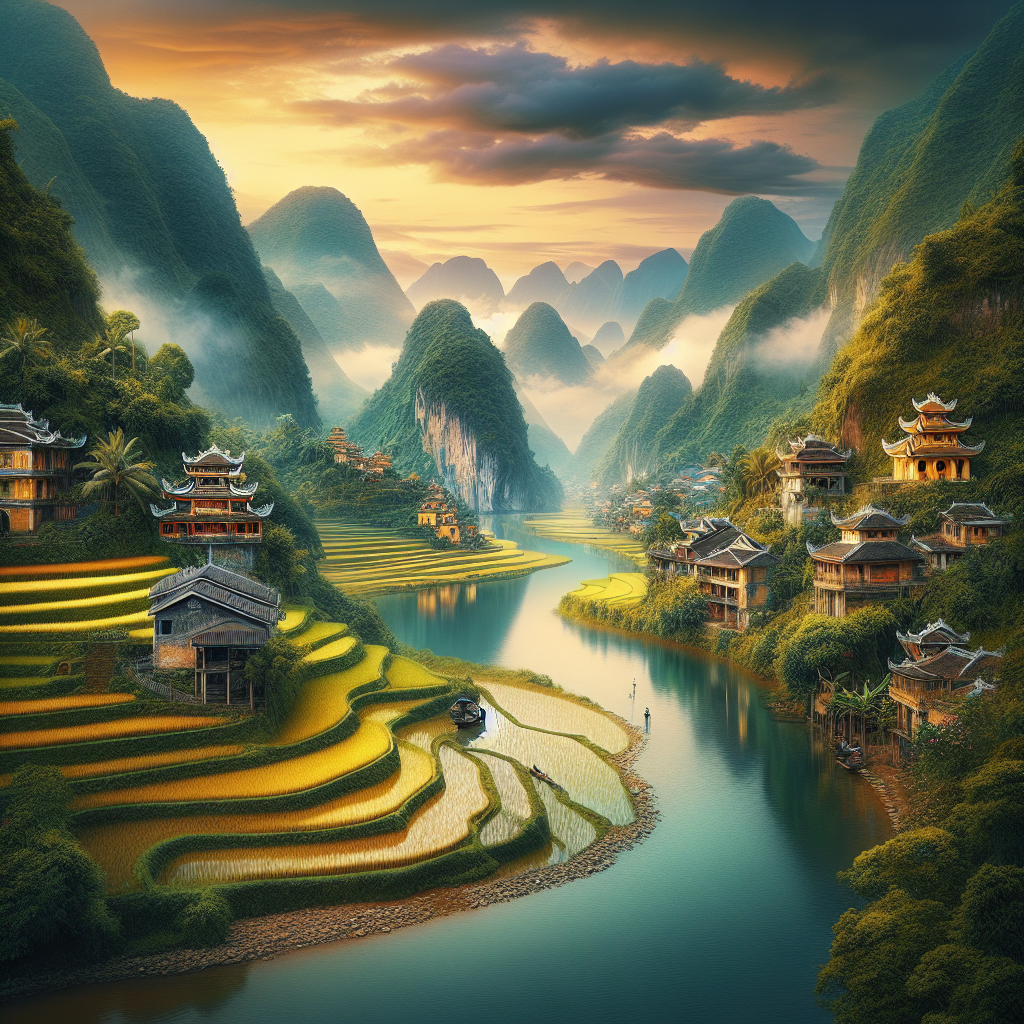Vietnam Unveiled: A Journey Through the Land of Timeless Charm
Vietnam, a country with a rich tapestry of history, vibrant cultures, and breathtaking landscapes, offers an unparalleled journey for any traveler. Nestled in the heart of Southeast Asia, it stretches over 1,000 miles from the northern mountains bordering China to the lush, tropical south with the Mekong Delta’s verdant landscapes. This land of timeless charm captivates visitors with its scenic beauty, ancient architecture, and the warmth of its people. Embarking on a journey through Vietnam is to experience the soul of Asia in its purest form.
The Northern Highlands: Where Time Stands Still
Your voyage through Vietnam should ideally begin in the northern highlands, home to the capital city, Hanoi. With its well-preserved colonial buildings, ancient pagodas, and the unique chaos of scooters zipping through its streets, Hanoi serves as the perfect introduction to Vietnam’s blend of old and new. Not far from Hanoi lies the surreal Halong Bay, a UNESCO World Heritage site, famous for its emerald waters and thousands of towering limestone islands topped with rainforests. A cruise through Halong Bay or a trek in the nearby mountains offers an escape into nature’s magnificence, where the worries of the modern world seem to dissolve.
The Imperial City of Hue: A Glimpse into Vietnam’s Royal Past
Traveling down the coast, the ancient city of Hue awaits with its imperial splendor. Once the capital of the Nguyen Dynasty, Hue’s citadel, royal tombs, and pagodas stand as a testament to the country’s regal history. A boat trip on the Perfume River, especially in the evening when the historic monuments are bathed in golden light, provides a magical experience.
Hoi An: A Melting Pot of Cultures
Hoi An, a charming town further south, known for its well-preserved Ancient Town, cut through with canals, is another UNESCO World Heritage site. The town reflects the influences of various eras and cultures, including Chinese shop houses, French colonial buildings, and the iconic Japanese Covered Bridge. Hoi An is also famous for its lantern-lit nights, when the ancient town turns into a vibrant spectacle of color and light.
Ho Chi Minh City and the Mekong Delta: Vibrancy and Vitality
Ho Chi Minh City, formerly known as Saigon, marks the contrast between Vietnam’s rural tranquility and urban dynamism. This bustling metropolis is the economic heart of the country, showcasing skyscrapers alongside historic sites. The War Remnants Museum and Cu Chi Tunnels offer insights into Vietnam’s turbulent history, particularly the Vietnam War.
Further south, the Mekong Delta offers a maze of rivers, swamps, and islands teeming with life. Exploring the delta provides a glimpse into the lives of local farmers and fishermen. The floating markets, where trade is conducted on boats laden with fruits, vegetables, and flowers, are a highlight of any trip to the delta.
Vietnamese Cuisine: A Feast for the Senses
No discussion of Vietnam would be complete without mentioning its cuisine. Vietnamese food is known for its freshness, balance, and flavors. From the famous pho (a noodle soup) and banh mi (a type of sandwich) to the less known but equally delicious dishes like bun cha (grilled pork with noodles) and cao lau (a type of noodle dish from Hoi An), Vietnamese cuisine offers a feast for the senses.
FAQs
Q1: What is the best time to visit Vietnam?
A1: The best time to visit Vietnam varies by region due to its length. Generally, spring (March and April) and autumn (September to November) are the most pleasant seasons for visiting the north and south. Central Vietnam is best visited between January and August.
Q2: Do I need a visa to visit Vietnam?
A2: Most visitors need a visa to enter Vietnam. However, there are exceptions for citizens of certain countries who can visit Vietnam for a limited period without a visa. It’s essential to check the latest visa requirements before planning your trip.
Q3: Is Vietnam safe for tourists?
A3: Vietnam is generally considered safe for tourists. However, like in any tourist destination, it’s important to be cautious with your belongings and be aware of your surroundings, especially in crowded places.
Q4: What should I pack for a trip to Vietnam?
A4: Lightweight and breathable clothing is recommended due to the warm climate. Also, pack a good pair of walking shoes, sunscreen, insect repellent, and a reusable water bottle. Don’t forget to bring any necessary medications and a power adapter for your electronics.
Q5: Can I use credit cards in Vietnam?
A5: Credit cards are widely accepted in cities and tourist destinations but carry some cash for purchases in smaller towns and rural areas. ATMs are readily available across the country.
Vietnam’s timeless charm, from its misty mountains and rural villages to its bustling cities, offers an unforgettable journey. Each region presents a different facet of Vietnamese culture and history, inviting travelers to immerse themselves in its beauty and complexity. Whether you’re exploring the ancient citadels, cruising through Halong Bay, or savoring the flavors of its cuisine, Vietnam promises an adventure that will captivate your heart and soul.
